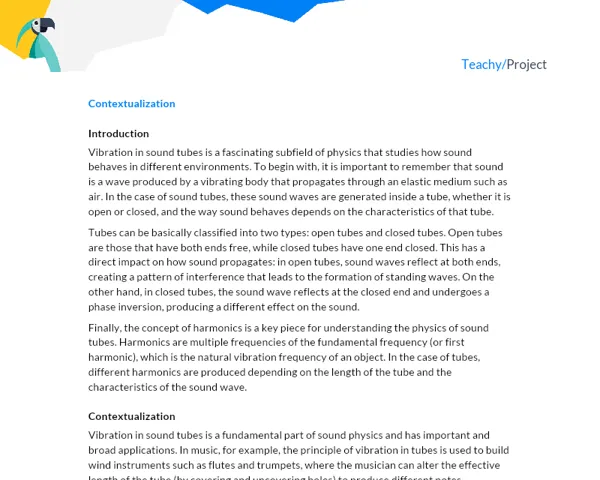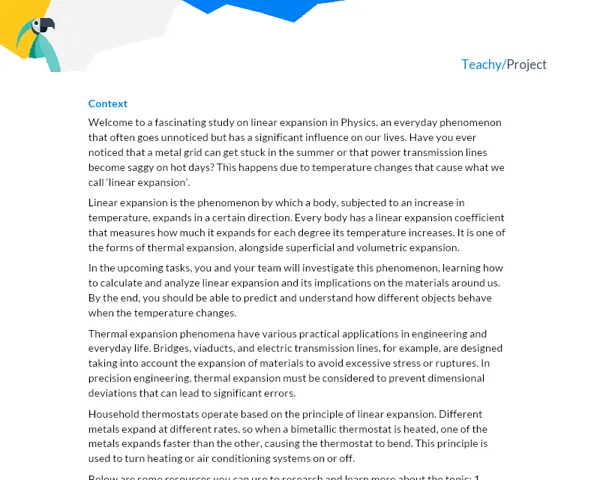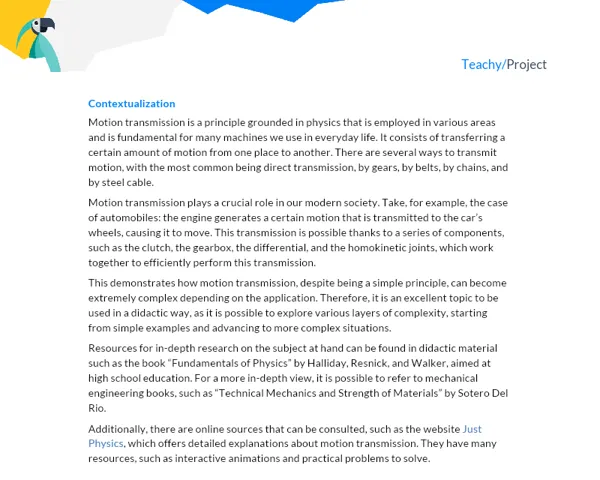Contextualization
Theoretical Introduction
Vectors are key concepts in physics, permeating various phenomena such as motion, forces, and fields. They are quantities that have magnitude, direction, and sense. In high school, we learn to add vectors using the parallelogram rule or vectors in the Cartesian plane.
Adding vectors is essential to understand how forces act on an object. For example, if two opposing forces act on an object, they cancel each other out. But if they act in the same direction, they add up. If they act in oblique directions, we need vector addition to find the resultant.
Understanding vector addition will help you interpret a variety of physical phenomena and situations we encounter in our daily lives. Thus, it is essential to learn and understand the theory of vectors and how to apply them in practice.
Contextualization
The ability to add vectors can be applied in various real situations - in engineering to calculate forces in structures, in meteorology to predict the weather based on wind speed and direction, in physics to understand the motion of objects, etc.
Furthermore, it is essential for understanding other concepts in physics such as Newton's laws. Therefore, this skill is not only important for understanding the physical world around us but also essential for those who wish to pursue careers in science, technology, engineering, and mathematics.
Practical Activity
Activity Title: "Moving with Vectors"
Project Objective
To understand the theory and practice of vector addition through a collaborative activity, promoting the understanding of concepts and their application in everyday situations by managing work time, improving communication, problem-solving, creative thinking, and proactivity.
Detailed Project Description
Groups will design and traverse a route in a large open space (such as a soccer field, gymnasium, or schoolyard), using vectors to plan their movements. Vectors will be used to represent the direction and magnitude (or step length) of each movement on the route.
Required Materials
- Paper and pen for taking measurements and calculations.
- Tape measure to measure the distances traveled.
- Compass to orient the directions.
- Stopwatch to control the execution time.
Step by Step
- Each group member defines a vector, specifying its direction (using the compass for the exact degree) and magnitude (determined by the number of steps or a predefined distance).
- The vectors are added, thus forming the route that the group must traverse.
- The group records all steps of the process, including the calculations and decisions made when forming the vectors and adding them to form the route.
- Once the route has been defined, the group must traverse it and measure the time it takes.
- After the walk, the group should discuss any discrepancies between the planned route and what actually happened. Examine possible measurement errors or unexpected challenges that arose during the activity.
- All these details should be documented.
Project Delivery
Generate a written report containing the following elements:
- Introduction: Explain the purpose of the activity, the importance of studying vectors, and contextualize the activity.
- Development: Describe the practical activity carried out, explaining the theory behind the vectors theme. Display the methodology adopted from planning to the execution of the experiment. Present and discuss the results obtained.
- Conclusions: Summarize the main points, explaining the lessons learned, the difficulties encountered, and the conclusions about the practice of vector addition.
- Bibliography used: Reference the research sources for the activity - books, videos, websites, etc.
Remember that communication clarity is as important as technical content. Make sure the report is well-structured and that the ideas presented are coherent and logical. Also, explain technical concepts in simple language so that people without physics knowledge can understand.



